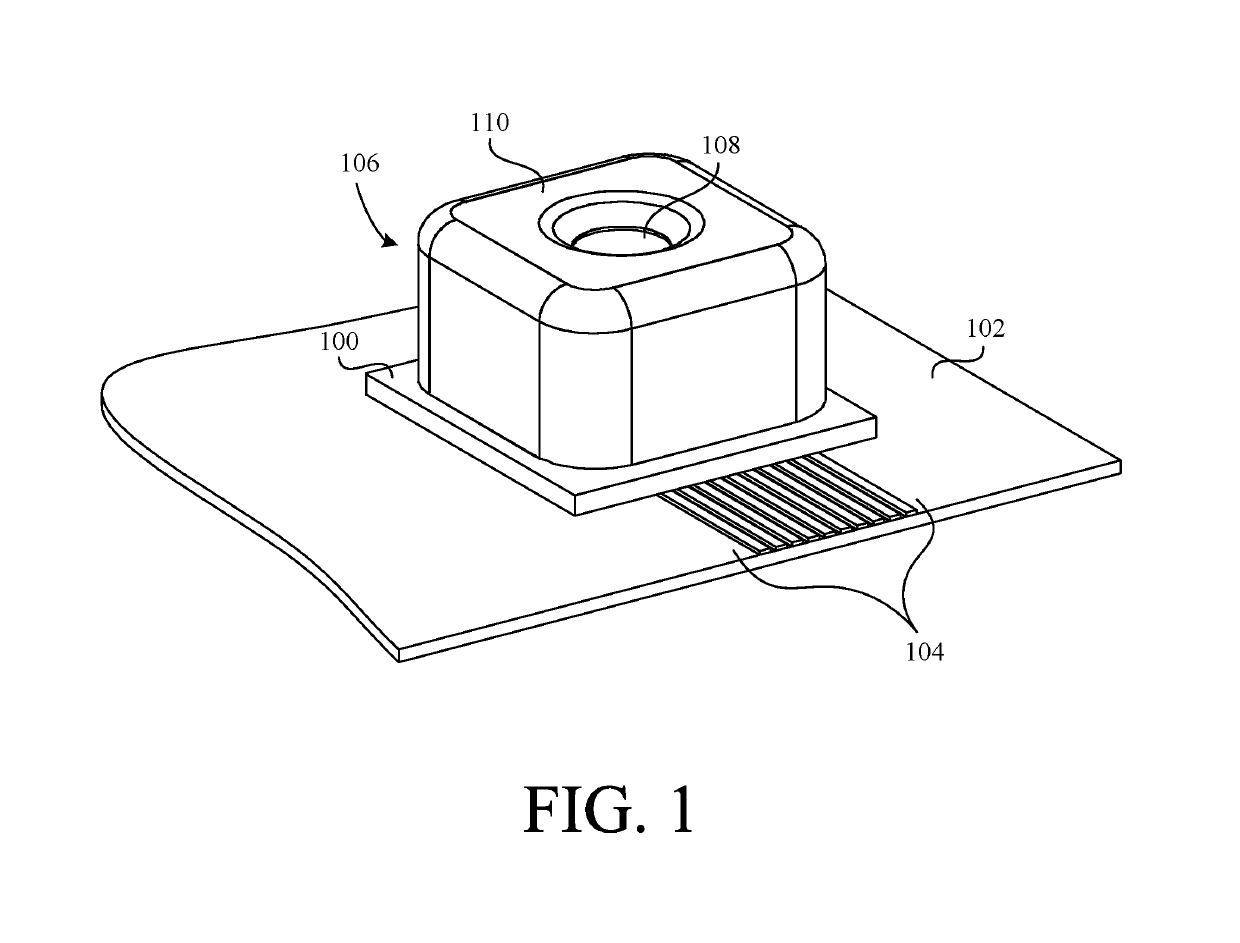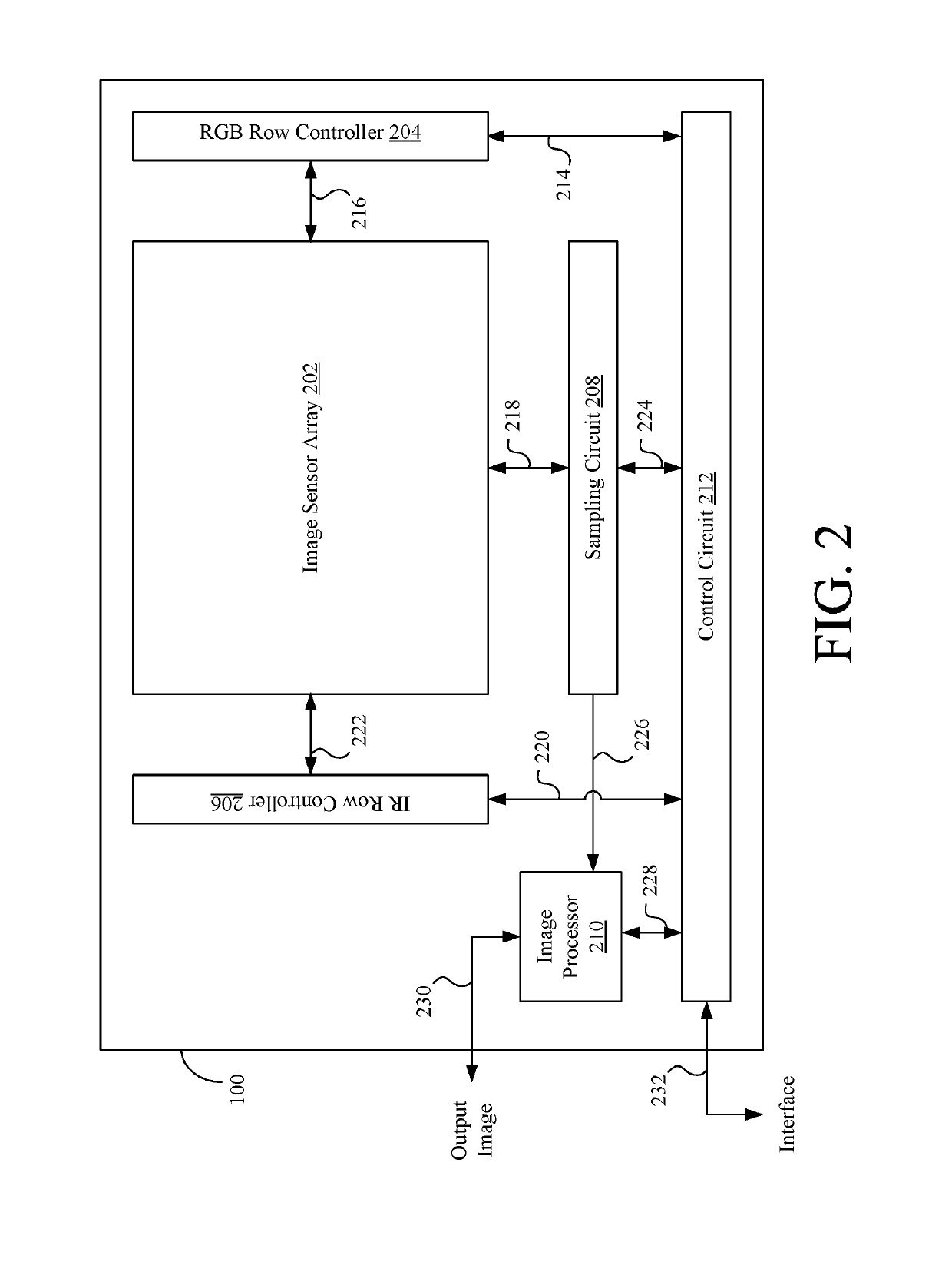Photogate for front-side-illuminated infrared image sensor and method of manufacturing the same
a technology of infrared image sensor and photogate, which is applied in the field of image sensor, can solve the problems of increasing increasing the difficulty in producing an image sensor that produces both high-quality color and infrared images, and increasing the complexity of image sensors used in the above applications, so as to reduce the risk of poor-performing pixels, improve pixel sensitivity, and reduce the effect of dark curren
- Summary
- Abstract
- Description
- Claims
- Application Information
AI Technical Summary
Benefits of technology
Problems solved by technology
Method used
Image
Examples
Embodiment Construction
[0030]The present invention overcomes the problems associated with the prior art, by providing a front-side-illuminated image sensor having infrared pixels, each of which includes a photogate that improves the pixel's performance, in part by reducing the number of substrate implants. The infrared pixels can also include a deep charge-accumulation region that underlies neighboring color pixel(s) and improves the sensitivity of the infrared pixels. In the following description, numerous specific details are set forth (e.g., particular types of doping, particular pixel layouts, etc.) in order to provide a thorough understanding of the invention. Those skilled in the art will recognize, however, that the invention may be practiced apart from these specific details. In other instances, details of well-known image sensor design and semiconductor fabrication practices (e.g., metallization, photo-masking, routine optimization, etc.) and components have been omitted, so as not to unnecessari...
PUM
 Login to View More
Login to View More Abstract
Description
Claims
Application Information
 Login to View More
Login to View More - R&D
- Intellectual Property
- Life Sciences
- Materials
- Tech Scout
- Unparalleled Data Quality
- Higher Quality Content
- 60% Fewer Hallucinations
Browse by: Latest US Patents, China's latest patents, Technical Efficacy Thesaurus, Application Domain, Technology Topic, Popular Technical Reports.
© 2025 PatSnap. All rights reserved.Legal|Privacy policy|Modern Slavery Act Transparency Statement|Sitemap|About US| Contact US: help@patsnap.com



